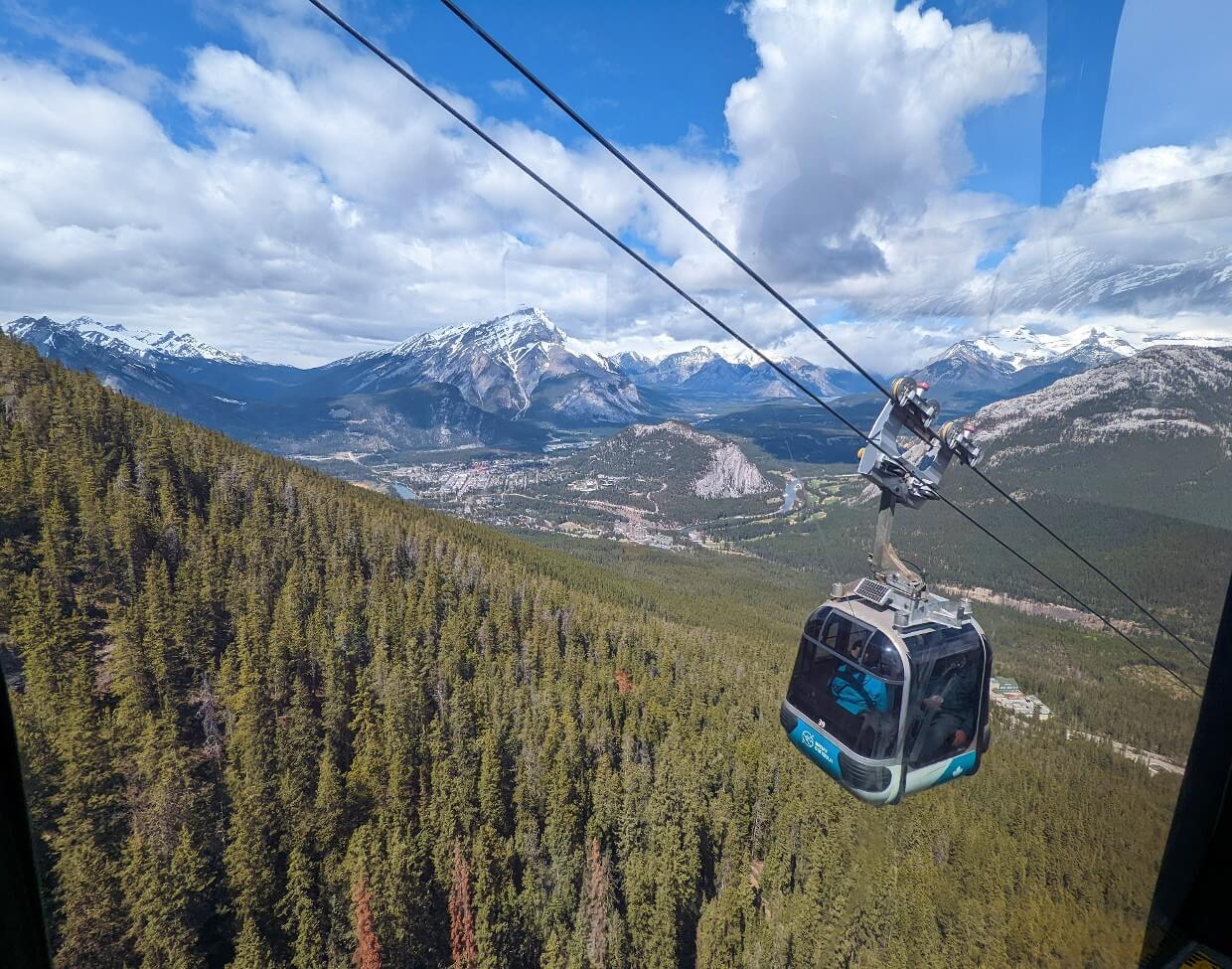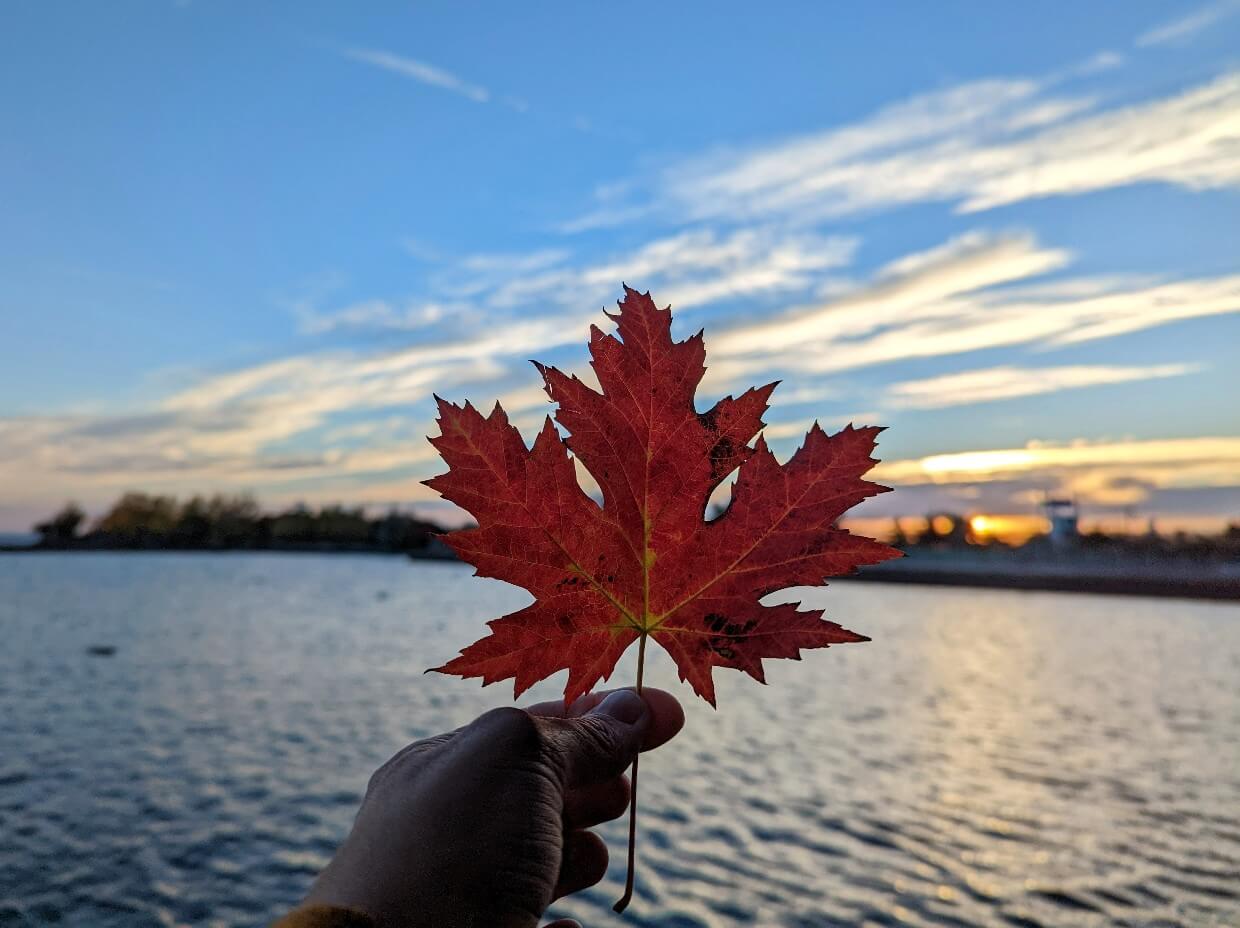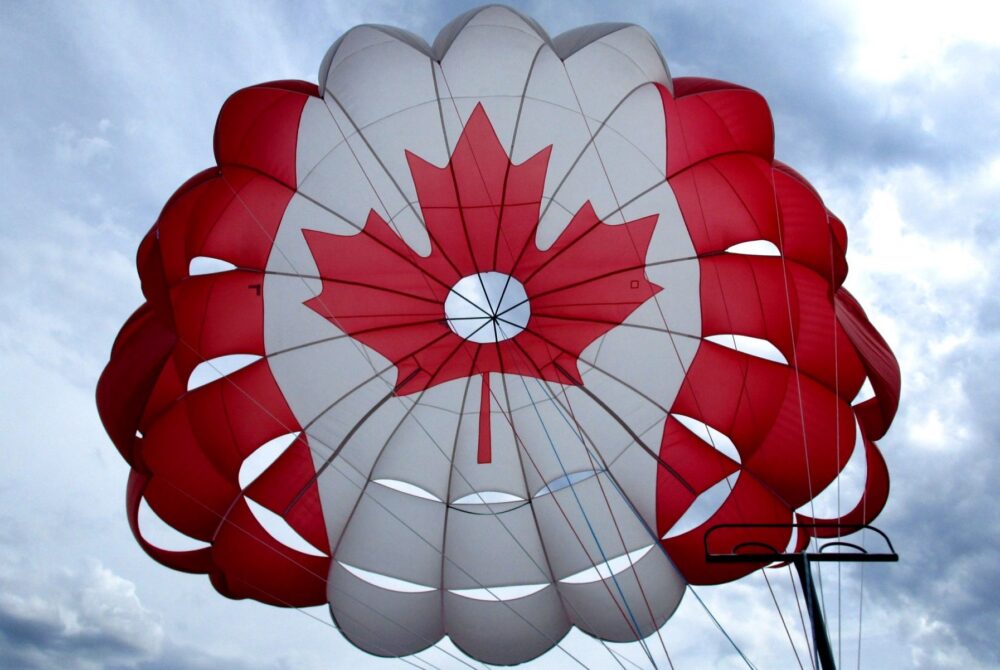As the second biggest country in the world (and dare I say one of the most beautiful?), Canada is a fantastic place to travel.
Whether you love to be in the mountains, by the ocean or in a busy cosmopolitan city, there’s a place for you in Canada. A working holiday in Canada is an ideal way to discover this spectacular place.
This post offers a condensed (but thorough) guide to moving to Canada on a working holiday. It provides a good starting point for your working holiday research.
I originally arrived in Canada on a working holiday, fell in love with the country and am now a Canadian citizen. I love to help others to experience Canada the way I have with posts like this and my 40k member working holiday Facebook group.
This post includes affiliate links. If you purchase an item through one of these links, we may receive a percentage of the sale.

Working holiday in Canada with the IEC
The International Experience Canada (IEC) program includes three streams:
- Working holiday
- Young Professionals
- International Co-op (internship)
The most popular of the three is the working holiday program, which allows young people aged 18-30 (18-35 in some cases) from participating to live, work and travel anywhere in Canada.
The length of the included work permit varies from 12 months to 2 years. The IEC working holiday program is, by far, the easiest way to try out living in Canada.

Applying for the IEC Working Holiday Program Canada
The IEC working holiday program has an entirely online application, based on a lottery system.
If you have already taken a working holiday elsewhere in the world, you will find Canada’s IEC application process to be quite different.
To apply for a working holiday in Canada, you must first have good timing.
The IEC works in cycles, with each yearly application cycle starting in early winter (December/January) and ending the following October.
Once the program opens, applicants can submit a profile into a ‘pool’ for their country of citizenship. Invites are then sent randomly to eligible candidates in each pool throughout the IEC cycle.
After receiving an invite, candidates submit a completed list of documents and biometrics. If submitted correctly, a POE (Port of Entry) email will be sent up to 8 weeks later, signifying final approval.
Many of the IEC pools are oversubscribed, meaning that not all applicants will receive an invite.
For a lot of people, the IEC working holiday application involves luck and patience. It is, however, absolutely worth it!
Not sure where to start? We break down the entire application process in our IEC application guide

Booking your flights to Canada
The first major decision after receiving your POE (final approval) is where to book a flight to Canada.
The most popular destinations for IEC participants are Toronto, Vancouver and Calgary. A fair number of travellers heading to Calgary and Vancouver will disperse to various mountain and resort towns in BC and Alberta.
Wherever you decide to fly, keep in mind that winter weather conditions can be difficult in Canada.
So if you have a deadline to meet (job start date, IEC POE expiry etc), be sure to fly out at least a week before this. It is not unusual for flights to be delayed, or even cancelled, in winter.
If you book a flight with a connection in Canada, be aware that you will complete immigration at your first point of arrival.
If you miss your connection due to immigration and the journey was on the same ticket, the airline should put you on the next available flight.
Can’t choose between Canada’s main cities? Read our Vancouver vs. Toronto comparison and Vancouver vs. Calgary comparison

Purchase IEC travel insurance for Canada
To participate in the IEC working holiday program, it is a requirement to purchase travel insurance to cover the length of your intended stay in Canada.
If you do not, you risk being given a shortened work permit or no work permit at all, with no potential extension later. Don’t risk your working holiday in Canada!
Besides this requirement, keep in mind that medical care in Canada is extremely expensive. The cost of a relatively simple visit to the Emergency Department in Canada can easily cost thousands of dollars.
- True Traveller offer 24 month IEC policies for British and EU citizens – I used them for my working holiday in Canada
- Fast Cover has an IEC specific policy for Australians. With Fast Cover, the initial 12-month policy can be extended to the full 24 months just before departure
- HeyMondo includes coverage for up to $10 million of medical expenses for Australians and Kiwis. There is, however, no ski cover available
- BestQuote are travel insurance specialists, partnered with some of the largest and most reputable insurance providers in Canada. Through them, it is possible to review, compare and purchase IEC-specific insurance policies with up to 2 years of coverage for many nationalities
Find out more details about all of the above IEC insurers in our working holiday Canada insurance guide

Organising foreign currency for your working holiday in Canada
Before you leave your home country, it is a good idea to consider how you will spend and access money while in Canada. There are quite a few ways of doing so, with varying value and convenience.
To transfer large amounts of money to your new Canadian bank account, I’d recommend using an online money transfer service like Wise. These offer excellent exchange rates with low transfer fees.
For the first few days, I’d suggest using re-loadable Visa/Mastercard debit cards which allow use in shops and withdrawals from ATMs. It’s possible to get one of these through Wise‘s borderless bank account. Monzo is an alternative.
Read More: The Cheapest (and Best!) Ways to Transfer Money to Canada

Booking short-term accommodation in Canada
It is a good idea to book a week or more of accommodation after your arrival in Canada. This will leave you more relaxed to settle into Canada.
If I was to move to Canada again, I’d book at least one month. The accommodation market is much more competitive these days.
When booking short-term accommodation, keep in mind that most long-term rentals will become available on the 15th or 1st of the month.
The most popular options for arrival accommodation in Canada are undoubtedly hostels and Airbnb. The latter is particularly good for groups and couples.

Leaving your home country
Here are a few more things to think before leaving home for Canada:
- Arrival documentation for IEC work permit activation (more details below)
- Student loan payments
- Advise the tax office of your departure
- Mail forwarding
- Photocopies or scans of your driver’s license and other important documents
- Leaving party with friends and family
- New passport since your IEC application? You’ll need to apply for a new eTA
- Organising your belongings. Need to take more than the airline will allow? Consider using an international shipping service such as SendMyBag. This link offers a 5% discount
Sign up to our IEC newsletter and receive a FREE printable packing list specifically designed for working holidaymakers heading for Canada!

Arriving for a working holiday in Canada
And now the exciting part begins. Most IEC participants arrive in Canada via a flight from their home country.
On arrival in Canada, you will need to head to customs as normal. Here, you will need to use the electronic Primary Inspection Kiosks to make your customs declaration.
Once you have a printed slip, head to the customs desk. Advise the border officer that you are activating your IEC work permit. They will direct you to immigration (a nearby side office).
Upon entering the immigration office, take a number.
When your turn is approaching, be sure to have all of your documents ready to show the immigration officer.
- Passport
- Proof of funds of $2,500 or more (bank statement dated within the last 7 days, can be a print-screen of online banking)
- Travel insurance for the length of your intended stay (policy statement)
- A return flight (or proof of additional funds to cover a return flight)
- Port of Entry (POE) acceptance letter
I would also recommend bringing a copy of this POE validity FAQ as well as the IEC bilateral agreements page. These documents prove how long your work permit should be.
Before leaving immigration, double-check that all the details on your work permit are correct (expiry date, name, location should read ‘open’). It is difficult and time-consuming to correct mistakes after leaving immigration.
After receiving the work permit, you’ll need to collect your luggage and then hand in the customs slip at the exit.
Arriving for your IEC working holiday in Vancouver? Read our comprehensive IEC arrival guide for Vancouver Airport
Getting your Social Insurance Number (SIN)
One of the first things you should do in Canada is secure your Social Insurance Number (SIN).
Without a valid SIN, you are unable to get paid for work in Canada. Getting a SIN is easy, once you have your IEC work permit.
It is possible to apply online for the SIN, but it requires proof of address and the processing time can be very long. It’s a much better idea to go in person.
The first step to securing your SIN is to locate a Service Canada office near you. Bring your passport and work permit during opening hours and be prepared to wait.
When called, you will need to show your documents to an agent and answer a few questions. The actual appointment is very quick and you will leave with a piece of paper with your SIN printed on it.

Opening a bank account in Canada
Banking in Canada is much the same as everywhere else….except it probably comes with more fees than you are used to.
The vast majority of banks in Canada charge monthly fees for the convenience of having an account.
Luckily, the biggest banks all offer some kind of newcomer deal that waives fees for a year or more. CIBC is a very popular bank for newcomers.
Opening a bank account in Canada is easy; simply wander in and ask. Some banks will book you an appointment for another time while some will open you an account then and there. Be sure to bring ID.
Alternatives to traditional banks include credit unions and online banks such as Tangerine. These offer basic checking accounts with no fees. The downside is that you need Canadian ID and proof of address to sign up.
I personally use Simplii Financial (and have done for almost 10 years now) and would recommend it for simple, free banking. If you sign up via this link, you’ll receive up to $350 into your account after depositing $100 and depositing a minimum of $100 for three months.
Tangerine also offers a free account. If you sign up to Tangerine with my orange key (52249338S1), you’ll receive a bonus $50 in your account.
Getting a Canadian cell phone number
Canadian cell phone plans are amongst some of the most expensive in the world – be prepared to spend more on your monthly cell phone plan than you did at home.
The easiest way to compare cell phone plans is to simply head to a cell phone shop (Best Buy, Walmart, the Source) and ask.
You can also visit kiosks and dedicated cell phone shops in malls.
Before signing up for a plan, check the coverage map. Not all companies cover everywhere in Canada! This can prove difficult if you plan to travel or live outside a big city.

Looking for work in Canada
While it is possible to look for work while still in your home country (especially professional work), your search is likely to be more productive after you have arrived in Canada.
Employers usually find it more helpful to have applicants who are local and able to work immediately. There is an exception for highly skilled professional roles.
The first step to securing employment is to Canadianise your resume. Some quick research on Google will demonstrate the differences from your home country.
Canadian resumes are pretty factual and often only one page in length. They should ideally be tailored to every job.
Resumes should be submitted with a cover letter that explains in more detail why you are an ideal fit for the position applied for.
Finding long-term accommodation in Canada
Methods to find apartment rentals and house shares vary across the Canadian provinces but some of the best resources remain universal.
- Padmapper combines rental adverts across a city or area
- Kijiji is used in many Canadian cities and communities, as is Craigslist
- Facebook groups are another good source
- Watch for signs outside apartment buildings
- Check local noticeboards
Always go and see a place in person before committing to a rental. There are many scams!
It is also important to research each province’s tenancy rights. In BC, for example, the maximum amount a landlord can charge for a rental deposit is half of the first month’s rent.

Living in Canada
No matter where you are from, you are bound to experience some cultural differences after moving to Canada.
Whether it is the weather, friendly people, incredible scenery or cost of living, there will be something new for you to experience here.
Thinking of the latter, here are some things you’ll probably notice:
- Canada is separated into provinces and territories, each of which is surprisingly different. On the IEC working holiday program, it is possible to live anywhere in Canada
- The cost of living in Canada is quite high. Hourly wages tend to be lower than other developed countries, especially compared to Australia.
- Groceries (especially dairy), consumer goods and alcohol are typically higher in cost than the UK and US
- Taxes are not included in the displayed cost of items. Most provinces and territories charge an additional tax rate on top of the federal tax rate of 5%. British Columbia, for example, charges an additional 7% on most consumer goods, while New Brunswick adds 10%
- Canadian weather can be extreme, with freezing cold winters and blisteringly hot summers. It does vary wildly between the provinces, however. One thing is for sure though – you will experience four seasons of weather wherever you go
- Most provinces allow IEC participants to sign up for provincial healthcare after establishing residence. If you choose to do so, keep in mind that provincial healthcare is not a replacement for travel insurance

My own Working Holiday in Canada experience
I arrived in Vancouver tired but excited to start my working holiday in Canada. My partner and I had chosen to start in British Columbia, thinking that we would try and work at a ski resort for the winter.
It was a fun plan but we had sadly arrived much too late (mid-November) to easily secure jobs. Disappointed but not defeated, we headed to Vancouver Island for some sightseeing.
We quickly fell in love with the beautiful mix of mountains, ocean and rainforest that Vancouver Island offered. It was a good thing too since we were already low on funds!
Settling down for the winter in the small town of Courtenay, our job hunting didn’t initially go so well.
Eventually, though, everything worked out. JR began working as a chef and I finally snagged a ski resort job, albeit much later (early January) than I originally imagined.
Within a few months of living the chilled Vancouver Island lifestyle, we decided to stay for another ski season in Courtenay. We loved the mild winter weather, friendly locals and the ridiculous amount of powder on the ski hill.
By the start of our second year in Courtenay, I was well into preparations for an application for permanent residency. There was no doubt that we wanted to stay in British Columbia for the near future. And here I am, now a Canadian citizen!
Of course, in the meantime, I have travelled across the country to all ten provinces and two territories, visiting countless amazing places. Canada is my home and I absolutely love it. Thank you IEC program!
Found this post helpful? Subscribe to our IEC newsletter!
Working holiday advice and updates delivered straight to your inbox, with a FREE printable IEC packing list
Check out these other posts about working holidays in Canada

One half of the Canadian/British couple behind Off Track Travel, Gemma is happiest when hiking on the trail or planning the next big travel adventure. JR and Gemma are currently based in the beautiful Okanagan Valley, British Columbia, Canada. Consider buying us a coffee if you have find any of our guides helpful!





Hey, was just wondering if i could talk directly to someone that could help me with the application process? Ive got a german passport, but was born and grew up in Namibia.
Hi Julian,
There are companies that offer support with the application process, but honestly, you still may not find them very helpful. You are welcome to ask your question here or join my IEC Facebook group
Hi, this was so helpful, my partner and I are about to embark on our IEC beginning of May and we’re a bit intimidated on the choices of where to start and what to do! But you’re article helped. I was just wondering about the student finance information you’ve listed for your arrival in Canada. I haven’t come across that yet in my research and was wondering why it was required?
Thanks
Hi Kirsty,
I’m glad you found this post helpful! Judging by your email address, it appears that you’re from the UK. If you’re going to Canada for longer than three months and have a student loan, you must contact the Student Loan Company to let them know.
While in the UK, HMRC takes the money to repay your loan automatically from your salary to pay the SLC. When you’re abroad, HMRC can no longer do this and that is why it is a requirement to contact SLC. They need to know how much you’re earning, with proof required. SLC will then set your repayment schedule accordingly. Failure to inform SLC will result in a default payment of £246 being charged per month.
Hi Gemma,
I am about to start me IEC beginning in 3 weeks. I am Australian but I’m currently on holiday in America and going to take the train to Vancouver, Canada. I was just wondering about the border security and customs via train?
Thank you!
Hi Claire,
When activating the IEC by train, you will go through immigration at Pacific Central Station in Vancouver. It’s a much nicer experience than taking the bus as with that method, the bus stops at the border and you would have to scramble to get through the process before the bus leaves again.
My friend from Japan has a working holiday visa expiring in February. She wants to return to Japan temporarily to visit a dying grandparent. Will she be allowed back into Canada in December?
Hi Rob,
Sorry to hear of your friend’s circumstances. Yes, she should be fine to return. It is recommended to bring the same documents that were brought to Canada on arrival. They don’t usually look at these but it wouldn’t be a bad idea to have printed proof of funds and insurance, just in case.